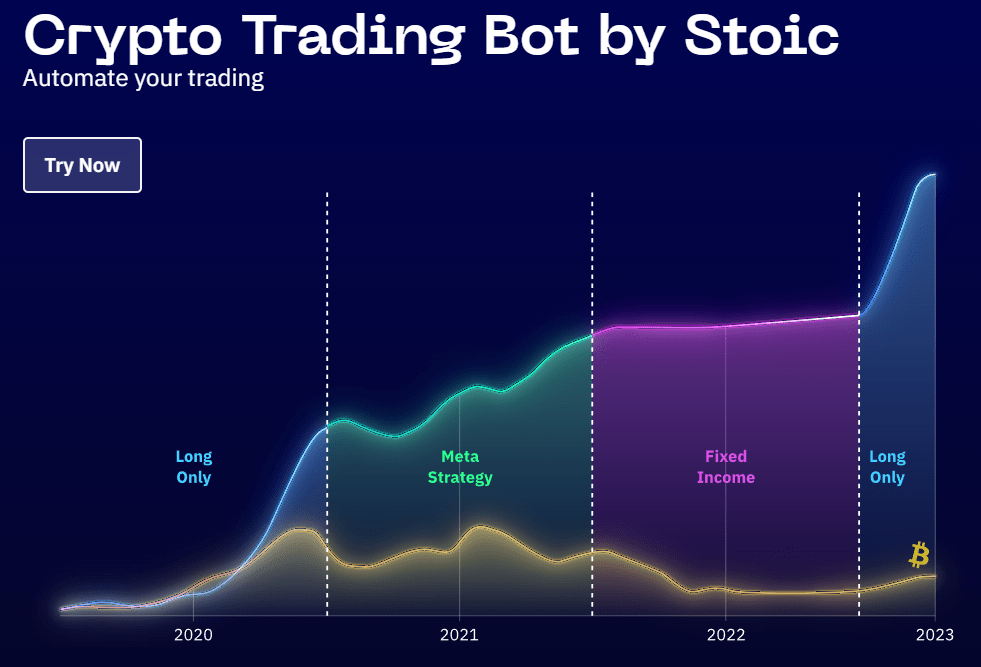Did you know that even the most seasoned traders have been outsmarted by a computer program? In today's fast-paced trading world, AI bots are becoming essential tools for maximizing efficiency and profits. This article dives into the nuts and bolts of setting up an AI bot for day trading, covering everything from the basics of what an AI trading bot is to how it operates and the benefits it offers. You’ll learn how to choose the right bot, the essential features to look for, and the programming languages involved in creating these sophisticated tools. We’ll also address risks, backtesting strategies, and common pitfalls to avoid. Plus, find out how much it costs to get started and whether you can leverage AI for cryptocurrency trading. Join us at DayTradingBusiness to enhance your trading strategy with cutting-edge technology!
What is an AI bot for day trading?
An AI bot for day trading is a software program that uses algorithms and machine learning to analyze market data and execute trades automatically. To set up an AI bot for day trading, follow these steps:
1. Choose a Trading Platform: Select a platform that supports API access for automated trading, like MetaTrader or TradingView.
2. Select a Bot: Pick an AI bot suited for your trading style. Popular options include Trade Ideas, AlgoTrader, or custom-built bots.
3. Configure Settings: Set parameters such as risk management, trade size, and market conditions the bot should respond to.
4. Backtest: Run the bot with historical data to evaluate its performance and refine strategies.
5. Deploy: Start the bot with real capital, monitoring its performance closely.
6. Adjust: Continuously analyze results and tweak the settings for optimal performance.
This setup enables you to leverage AI for efficient day trading.
How does an AI trading bot work?
An AI trading bot analyzes market data, identifies patterns, and executes trades based on algorithms. To set up an AI bot for day trading, follow these steps:
1. Choose a Trading Platform: Select a platform that supports API access for bot integration.
2. Define Trading Strategy: Determine your trading goals, risk tolerance, and strategies (e.g., trend following, arbitrage).
3. Select or Develop AI Model: Use a pre-existing AI model or create one using machine learning techniques to analyze data.
4. Backtest the Bot: Test the bot's performance against historical data to refine its strategy and minimize risks.
5. Implement Risk Management: Set stop-loss and take-profit levels to protect your capital.
6. Deploy and Monitor: Launch the bot and monitor its performance, making adjustments as needed based on market conditions.
This approach helps maximize efficiency and capitalize on market opportunities.
What are the benefits of using an AI bot for day trading?
Using an AI bot for day trading offers several benefits:
1. Speed: AI bots can analyze market data and execute trades faster than humans.
2. Accuracy: They utilize algorithms to make data-driven decisions, reducing emotional trading errors.
3. 24/7 Operation: Bots can monitor markets continuously, seizing opportunities even when you're not available.
4. Backtesting: You can test strategies against historical data to optimize performance before live trading.
5. Risk Management: AI bots can implement stop-loss orders and other risk management strategies automatically.
6. Diversification: They can manage multiple assets simultaneously, spreading risk across different trades.
These advantages can enhance your day trading strategy significantly.
How do I choose the right AI bot for day trading?
To choose the right AI bot for day trading, consider these factors:
1. Performance History: Look for bots with a proven track record in real market conditions, focusing on consistent profits and risk management.
2. Strategy Compatibility: Ensure the bot’s trading strategies align with your goals (e.g., scalping, momentum trading).
3. Customization: Choose a bot that allows you to tweak settings and strategies based on your risk tolerance and trading style.
4. User Reviews: Research user feedback to gauge reliability and ease of use.
5. Support and Updates: Opt for bots with strong customer support and regular updates to adapt to market changes.
6. Cost Structure: Evaluate fees, including subscription costs and commission rates, to ensure they fit your budget.
7. Security Features: Prioritize bots with robust security measures to protect your funds and data.
Assessing these criteria will help you select a suitable AI bot for day trading.
What features should I look for in a day trading AI bot?

Look for these key features in a day trading AI bot:
1. Real-time Market Analysis: It should analyze market trends and price movements in real-time.
2. Customizable Strategies: Ensure it allows you to set and adjust trading strategies based on your risk tolerance.
3. Backtesting Capability: Look for bots that can backtest strategies using historical data to evaluate performance.
4. Risk Management Tools: It should include features like stop-loss and take-profit settings to minimize potential losses.
5. User-friendly Interface: A straightforward interface makes it easier to navigate and execute trades.
6. Integration with Exchanges: The bot should support multiple exchanges for greater trading flexibility.
7. Performance Analytics: It should provide detailed reports on trading performance and metrics.
8. 24/7 Trading: Ensure it can operate continuously without manual intervention.
9. Security Measures: Look for strong security protocols to protect your data and funds.
10. Community Support: A supportive user community can help you troubleshoot and optimize your strategies.
How can I set up an AI bot for day trading?
1. Choose a trading platform: Select one that supports API integration, like MetaTrader, Alpaca, or Interactive Brokers.
2. Define your strategy: Decide on the trading approach, such as trend following, mean reversion, or arbitrage.
3. Select an AI framework: Use tools like TensorFlow, Keras, or PyTorch for building your bot.
4. Gather historical data: Collect relevant market data for training your AI model.
5. Train your model: Use your historical data to train the AI on your defined strategy, focusing on key indicators.
6. Backtest: Test your AI bot on historical data to evaluate performance and refine your strategy.
7. Set risk management rules: Implement stop-loss and take-profit levels to manage risk.
8. Deploy the bot: Connect your AI bot to your trading platform and start trading in a demo account first.
9. Monitor and optimize: Regularly assess performance, adjust strategies, and retrain the model as necessary.
What programming languages are used to create trading bots?
Python, JavaScript, C++, and Java are commonly used programming languages for creating trading bots. Python is popular for its simplicity and extensive libraries like Pandas and NumPy. JavaScript is often used for web-based bots. C++ offers high performance, while Java provides portability across platforms. Choose based on your specific needs and trading strategy.
How do I train an AI bot for day trading?
To train an AI bot for day trading, follow these steps:
1. Data Collection: Gather historical market data, including price movements, volume, and technical indicators.
2. Preprocessing: Clean and preprocess the data, removing outliers and normalizing values to enhance model performance.
3. Feature Engineering: Create relevant features such as moving averages, RSI, or MACD to help the bot identify trading signals.
4. Model Selection: Choose a machine learning model suitable for time series prediction, like LSTM or reinforcement learning algorithms.
5. Training: Split your data into training and testing sets. Train your model on the training set, adjusting parameters to optimize performance.
6. Backtesting: Test the model against unseen data to evaluate its performance and refine strategies based on results.
7. Implementation: Integrate the trained model into a trading platform, ensuring it can execute trades based on its predictions.
8. Monitoring and Iteration: Continuously monitor the bot's performance and adjust strategies as market conditions change.
9. Risk Management: Implement risk management strategies to minimize losses, like setting stop-loss orders.
By following these steps, you can effectively set up and train an AI bot for day trading.
What data do I need to feed my AI trading bot?
To set up an AI trading bot for day trading, you need the following data:
1. Historical Price Data: Collect past stock prices, including open, high, low, close (OHLC), and volume data.
2. Technical Indicators: Use indicators like moving averages, RSI, MACD, and Bollinger Bands to help identify trading signals.
3. Market News: Integrate news sentiment analysis to gauge market reactions to events that could impact stock prices.
4. Order Book Data: Access real-time bid and ask prices to understand market depth and liquidity.
5. Economic Indicators: Monitor relevant economic data (like unemployment rates, GDP growth) that could affect market trends.
6. User-defined Parameters: Include risk management settings, entry and exit strategies, and stop-loss levels tailored to your trading strategy.
Gathering and processing this data will enhance your bot's decision-making capabilities.
Are there any risks associated with using an AI trading bot?

Yes, there are several risks associated with using an AI trading bot. These include market volatility, which can lead to unexpected losses; technical failures, such as software bugs or connectivity issues; and over-optimization, where a bot performs well on historical data but fails in real-time trading. Additionally, AI bots can make decisions based on flawed algorithms or incomplete data, resulting in poor trading choices. Always monitor the bot's performance and have a risk management strategy in place.
Learn about Legal Risks Associated with Using Automated Trading Systems
How do I backtest my AI bot for day trading strategies?
To backtest your AI bot for day trading strategies, follow these steps:
1. Choose a Backtesting Platform: Select software like MetaTrader, TradingView, or custom Python scripts using libraries like Backtrader.
2. Gather Historical Data: Obtain accurate historical price data for the assets you want to trade. Ensure it includes relevant time frames.
3. Define Your Strategy: Clearly the rules your AI bot will follow, including entry and exit points, risk management, and position sizing.
4. Implement the Strategy: Code your strategy into the bot, ensuring it can process the historical data and execute trades based on your defined rules.
5. Run the Backtest: Execute the backtest on historical data. Analyze how the bot would have performed, noting metrics like profit, loss, drawdown, and win rate.
6. Analyze Results: Review the performance metrics. Adjust your strategy as needed based on the outcomes, looking for patterns or weaknesses.
7. Iterate: Refine your strategy and repeat the backtesting process to improve performance and reliability.
8. Simulate Forward Testing: After backtesting, run the bot in a simulated environment to validate its effectiveness in real-time conditions.
This process will help you ensure your AI bot is optimized for day trading before deploying it in live markets.
Learn about How Do Prop Firms Affect Day Trading Strategies?
What are common mistakes to avoid when using an AI bot for trading?
1. Ignoring Backtesting: Failing to test your AI bot on historical data can lead to poor performance. Always backtest strategies before live trading.
2. Over-Optimization: Tuning your bot too much to past data can create a model that doesn’t perform well in real-time. Strike a balance between optimization and generalization.
3. Neglecting Market Conditions: AI bots may not adapt to changing market conditions. Ensure your bot can respond to volatility and shifts in trends.
4. Setting Improper Risk Management: Skipping risk management settings can lead to significant losses. Use stop-loss orders and position sizing to protect your capital.
5. Lack of Monitoring: Even automated trading needs oversight. Regularly check the bot’s performance and make adjustments as necessary.
6. Ignoring Fees and Slippage: Not accounting for transaction costs and slippage can distort profitability. Factor these into your trading strategy.
7. Using Inadequate Data: Poor-quality or insufficient data can mislead your bot. Use reliable, comprehensive datasets for training.
8. Emotional Trading: Allowing emotions to influence decisions can sabotage even the best AI bots. Stick to your strategy and let the bot execute it.
9. Neglecting Security: Failing to secure your trading account can lead to hacks. Use strong passwords and two-factor authentication.
10. Overtrading: Setting your bot to trade too frequently can lead to unnecessary fees and losses. Be strategic about trading frequency.
How can I optimize my AI trading bot’s performance?
To optimize your AI trading bot’s performance, focus on these key areas:
1. Data Quality: Use high-quality, real-time market data for accurate predictions. Clean and preprocess your data to remove noise.
2. Algorithm Selection: Choose or develop algorithms that suit your trading strategy, whether it's trend-following, mean-reversion, or arbitrage.
3. Backtesting: Rigorously backtest your bot on historical data to evaluate its performance. Adjust parameters based on results to enhance accuracy.
4. Risk Management: Implement strict risk management rules, including stop-loss and position sizing strategies, to protect your capital.
5. Continuous Learning: Use machine learning techniques to adapt your bot to changing market conditions. Regularly update your models based on new data.
6. Latency Minimization: Optimize execution speed by reducing latency. This might involve using faster servers or co-locating your bot near the exchange.
7. Parameter Optimization: Fine-tune your bot’s parameters using techniques like grid search or genetic algorithms to find the best settings.
8. Monitoring and Maintenance: Continuously monitor your bot’s performance and make necessary adjustments. Set up alerts for unusual activity or performance drops.
By focusing on these aspects, you can significantly enhance your AI trading bot’s effectiveness in day trading.
Learn about How Do I Optimize My Day Trading Bot’s Performance?
What platforms support AI bot integration for day trading?

Popular platforms that support AI bot integration for day trading include MetaTrader 4 and 5, TradingView, NinjaTrader, and Interactive Brokers. Each of these platforms allows you to connect or develop AI trading bots using their APIs or built-in scripting languages. Choose one based on your trading strategy, programming skills, and specific requirements.
How much does it cost to set up an AI trading bot?
Setting up an AI trading bot can cost anywhere from a few hundred to several thousand dollars. Basic bots using free or low-cost platforms might start around $200, while more advanced, customizable solutions can range from $1,000 to $5,000. If you hire a developer or use a premium service, expect to spend even more, potentially exceeding $10,000. Ongoing costs, like data feeds and subscription services, should also be factored in.
Can I use an AI bot for day trading cryptocurrencies?
Yes, you can use an AI bot for day trading cryptocurrencies. To set it up, follow these steps:
1. Choose a Trading Platform: Select a platform that supports AI bots, like Binance or Coinbase Pro.
2. Select an AI Bot: Pick a trading bot software like 3Commas, Cryptohopper, or Gunbot.
3. Create an Account: Sign up on both the trading platform and the bot’s website.
4. Connect Accounts: Use API keys from your trading account to link it with the bot.
5. Set Parameters: Define your trading strategies, including risk tolerance, trading pairs, and profit targets.
6. Backtest: Test your bot's strategies with historical data to ensure effectiveness.
7. Start Trading: Activate the bot and monitor its performance regularly.
Remember to adjust settings based on market conditions.
Conclusion about How to Set Up an AI Bot for Day Trading?
In summary, setting up an AI bot for day trading can enhance your trading strategy by leveraging advanced algorithms and data analysis. It’s crucial to choose the right bot with essential features, understand the risks involved, and ensure proper training and backtesting. With the right knowledge and tools, including guidance from experts at DayTradingBusiness, you can optimize your trading performance and navigate the complexities of the market effectively.